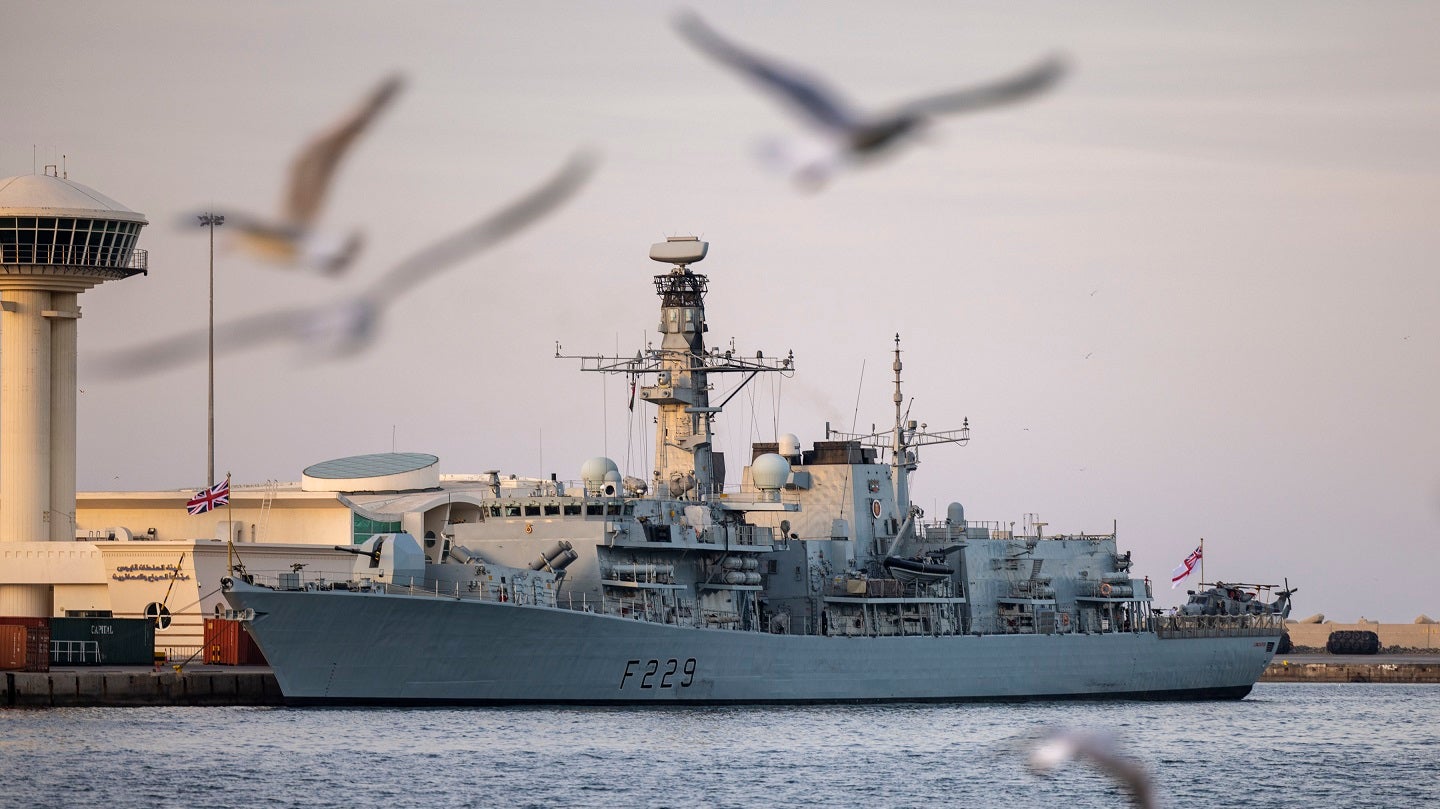
The growing difficulty in keeping the ageing Type 23 frigates in Royal Navy service and capable in carrying out assigned taskings in a domain that is increasingly competitive and dominated by next-generation technologies has been laid bare in data released by the UK Government.
Responding to the written parliamentary request, the data released by the UK shows an apparent incremental increase in the length of time it has taken for each Type 23 frigate undergoing a mid-life or life-extension (LIFEX) programme.
From 2011-2017 each of the 13 Type 23 frigates underwent a LIFEX or refit period, with the duration of each programme ranging from 12 months up to 36 months. From 2018 onwards the figures increase, with the first three vessels to undergo earlier work returned to the shipyards for between 37-49 months.
A range of factors will influence the duration of a LIFEX period such as new systems being integrated, the overall condition of the vessel at it enters drydock, and other factors such as industrial difficulties encountered during the Covid-19 pandemic.
HMS Iron Duke appears has spent the most amount of time undergoing refit of the entire class, with a total of 71 months from February 2012 to June 2023 in two separate periods. Put another way, in a period of 11 years and five months, the vessel was undergoing refit work for 5.9 years, or 51.8% of the time it was in service.
| Ship | Contractor | Start | End | Duration (months) |
| HMS Portland | Babcock | Nov-11 | May-13 | 19 |
| HMS Iron Duke | BAE Systems | Feb-12 | Nov-13 | 22 |
| HMS Somerset | Babcock | Apr-12 | Mar-13 | 12 |
| HMS Sutherland | Babcock | Oct-13 | Jun-15 | 21 |
| HMS St Albans | BAE Systems | Apr-13 | Aug-14 | 17 |
| HMS Westminster | BAE Systems | Oct-14 | Mar-17 | 30 |
| HMS Monmouth | Babcock | Jan-14 | Sep-15 | 21 |
| HMS Montrose | Babcock | Mar-14 | Jul-15 | 17 |
| HMS Argyll | Babcock | May-15 | Apr-17 | 24 |
| HMS Northumberland | Babcock | May-16 | Apr-18 | 23 |
| HMS Kent | Babcock | Oct-16 | Oct-18 | 25 |
| HMS Lancaster | Babcock | May-17 | May-20 | 36 |
| HMS Richmond | Babcock | Sep-17 | Mar-20 | 30 |
| HMS Somerset | Babcock | Oct-18 | May-22 | 43 |
| HMS Portland | Babcock | Apr-18 | May-21 | 37 |
| HMS Iron Duke | Babcock | May-19 | Jun-23 | 49 |
It can also be seen that BAE Systems last performed a refit on a Type 23 frigate in 2017, at the conclusion of a 30-month work period on HMS Westminster. The data also reveals that while vessels were sent into refit in a steady drumbeat of two per year, the fluctuating nature of the time required to complete it saw some years with three frigates returning (2013) and others with none (2016 and 2019).
Type 23 planned OSD
In an attempt to offset the looming drop in surface combatant numbers, the Royal Navy is sending many of the remaining Type 23 frigates into service life-extension (LIFEX) programmes. Of the Type 23s in service, HMS Argyll underwent a LIFEX programme in 2022 in a bid to keep the vessel in the fleet until the 2027-2028 timeframe.
Although the Type 23 frigates were due to begin being decommissioned from the Royal Navy in 2023 on a drumbeat of one-per-year until 2035, HMS Monmouth was removed from service in 2021, five years ahead of schedule, while HMS Montrose departed in 2023, instead of its planned out-of-service-date of 2027.
However, it is understood that, in line with vessel class certification rules, the out-of-service date of warships can be extended for a maximum of six years following completion of each upkeep maintenance programme.
The cost to refit and maintain the ageing class is also a factor, with HMS Iron Duke’s recent refit costing more than £100m. The material state of some of the older Type 23 frigates is also a factor, and it is unknown whether all will be able to see out their scheduled service life.




